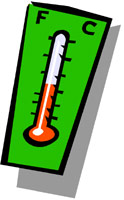 |
All About Composting |
||||||||||||||||||||||||||||||||||
Get Our Free Newsletter
|
Compost improves your soil. When added to soil, compost breaks up heavy clay soils, helps sandy soils retain water and nutrients, and releases essential nutrients. Compost also contains beneficial microscopic organisms that build up the soil and make nutrients available to plants. Improving your soil is the first step towards growing healthy plants. WHAT CAN I COMPOST? WHAT MATERIALS
SHOULD I AVOID ADDING TO MY COMPOST PILE? Weeds that have not gone to seed can be added to the compost pile. Weeds with large storage roots like nutsedge, Florida betony or greenbriar should be left out and dried in the sun before composting to reduce their chances of survival. The high levels of heat produced in the center of the compost pile can kill many pests, such as weeds with seeds and diseased or insect-infested plants. However, it is very difficult to mix the contents thoroughly enough to bring all the wastes to the center, so some disease organisms may be returned to the garden with the compost. "ESSENTIALS"
OF COMPOSTING Leaves, straw and sawdust are high in carbon, while grass clippings, manure and vegetable scraps are higher in nitrogen. It helps to think of these materials as greens and browns. Greens, such as grass clippings, are high in nitrogen. Browns, such as leaves or sawdust, contain high amounts of carbon. Be aware that anything organic will decay (as long as it is organic, the critters will eat it); however, it may take a long time to make compost when the C:N ratio is too high. For example, a pile made solely of sawdust will take years to decay. Adding more greens, such as grass clippings or vegetable scraps, will speed up decay and produce compost in less time. Experiment to find the right combination of materials for your compost pile. Table 1. Average carbon to nitrogen ratios for organic materials.
Surface Area and
Size of the Compost Pile A large compost pile will insulate itself and hold in the heat created by the tiny organisms. Piles smaller than 3 feet x 3 feet x 3 feet have trouble holding this heat, while piles larger than 5 feet x 5 feet x 5 feet prevent enough air from reaching the center of the pile and the microbes. In addition, turning a large pile is a chore. If your pile is large, you will have to turn it more often. If the pile is small, you will get a good batch of compost during warm months. Moisture and
Aeration Turning the materials in your pile supplies oxygen to the composting critters. A lack of oxygen in a compost pile can lead to an odor problem due to the production of ammonia and methane gases. Decomposition without oxygen also causes the production of chemical compounds that are toxic to plants. Organic matter that has been allowed to decompose without oxygen (for example, "composting" in closed garbage bags) should be exposed to air for several days to complete the composting process and to destroy any plant-toxic compounds. Temperature and
Time SOME COMPOSTING METHODS "Fast"
Compost Recipe Continue adding and mixing layers of greens and browns until you either fill the bin or run out of materials. Slant the top of the pile to the center to catch rainfall. You may want to cover the pile with a plastic covering or tarp to regulate the amount of moisture entering your pile. The cover should not rest on the pile because it may cut off oxygen. Periodically, check the moisture content of your pile. The compost should feel damp. Check the interior temperature of your pile and when the temperature reaches 140 °F or begins to fall, it is time to turn the pile. You will need to turn your pile every three to five days. Once your turning causes no rise in temperature, and the material appears dark and crumbly, your compost is ready. "Slow"
Compost Recipe The ingredients are the same as those for a "fast" compost. Add greens and browns to your pile whenever they become available. Turn the pile occasionally to mix the materials together to prevent the materials from clumping together and to avoid anaerobic decomposition. You will know that your materials are decaying without oxygen by the foul odor: a telltale sign for you to turn the pile. Look for ready-to-use compost near the bottom of the pile. COMPOST STRUCTURES Composting structures can be made from a wide variety of materials or purchased through local garden centers or mail order catalogues. There are no set rules when building a compost bin. The sides should be loose enough to provide some air movement and one side should open for easy turning and compost removal. If you choose not to use a container, cover the heap with a layer of yard trimmings or soil to prevent moisture loss. Circular Bins Simple bins can be made of old wooden pallets stood on their ends in a square or open square and nailed or tied together. A chicken wire cage supported by three or four wooden stakes will also work well. A standard-sized garbage can with eight or more slots in the sides of the can for ventilation and five in the bottom for drainage can also be used. Three-Chambered Unit Barrel or Drum USING COMPOST Think of compost as a soil amendment and not as a fertilizer, since the nutrient level of compost is low and released over time. Mix compost with soil to enrich the flower and vegetable garden. It can be used to improve the soil around trees and shrubs, as a top-dressing for lawns, or as a mulch. Screen compost by separating the larger particles and any uncomposted materials from the finer ones and add it to the potting mix for houseplants. No more than one-quarter to one-third by volume of the potting mix should be compost. Soaking compost in a burlap or cheesecloth sack steeped in water can make compost "tea." The weak nutrient solution can be given to young plants. Table 2. Troubleshooting guide for efficient composting.
Prepared by Bob Polomski, Extension Consumer Horticulturist, and Nancy
Doubrava, HGIC Information Specialist, Clemson University. Reprinted and published with permission by Savvygardener.com. |
||||||||||||||||||||||||||||||||||
|
|
|||||||||||||||||||||||||||||||||||
|
© 1999 - 2010 Savvygardener.com, Inc. All rights reserved. If you wish to copy, transmit, or otherwise duplicate any of the material from our website please ask us first. Thank you. |
|||||||||||||||||||||||||||||||||||
 Most plant material
can be used for compost. Organic trimmings in your landscape, such as
fallen leaves, pine needles, grass clippings, flowers and the remains of
garden plants make excellent compost. Compost made from grass clippings
treated with herbicides and pesticides is not recommended for use in
vegetable gardens. Kitchen scraps, such as fruit and vegetable peels and
trimmings, crushed eggshells, tea bags, and coffee grounds and filters can
also be composted. Woody yard trimmings can be run through a shredder
before adding to the compost pile. Sawdust may be added in moderate
amounts if additional nitrogen is applied. Add a pound of actual nitrogen
per 100 pounds of dry sawdust.
Most plant material
can be used for compost. Organic trimmings in your landscape, such as
fallen leaves, pine needles, grass clippings, flowers and the remains of
garden plants make excellent compost. Compost made from grass clippings
treated with herbicides and pesticides is not recommended for use in
vegetable gardens. Kitchen scraps, such as fruit and vegetable peels and
trimmings, crushed eggshells, tea bags, and coffee grounds and filters can
also be composted. Woody yard trimmings can be run through a shredder
before adding to the compost pile. Sawdust may be added in moderate
amounts if additional nitrogen is applied. Add a pound of actual nitrogen
per 100 pounds of dry sawdust. Organic materials
that should not be added to your compost pile include meat, bones and
fatty foods (such as cheese, salad dressing and leftover cooking oil). Do
not add pet or human wastes to a compost pile.
Organic materials
that should not be added to your compost pile include meat, bones and
fatty foods (such as cheese, salad dressing and leftover cooking oil). Do
not add pet or human wastes to a compost pile. The more
surface area the microorganisms have to work on, the faster the materials
will decompose. You can increase the surface area of your yard trimmings
by chopping them up with a shovel or running them through a shredding
machine or lawnmower.
The more
surface area the microorganisms have to work on, the faster the materials
will decompose. You can increase the surface area of your yard trimmings
by chopping them up with a shovel or running them through a shredding
machine or lawnmower. The microbes in your compost pile need a certain amount of water and air
to survive. Microbes function best when the materials are about as moist
as a wrung-out sponge and are provided with plenty of air. Too much
moisture will force out the air and suffocate the microorganisms. Too
little moisture will slow down decay. Whenever you add water, be sure to
mix the material to distribute the moisture evenly.
The microbes in your compost pile need a certain amount of water and air
to survive. Microbes function best when the materials are about as moist
as a wrung-out sponge and are provided with plenty of air. Too much
moisture will force out the air and suffocate the microorganisms. Too
little moisture will slow down decay. Whenever you add water, be sure to
mix the material to distribute the moisture evenly. As
a result of the decomposition process, the interior temperature of the
pile should peak between 90° and 140°F or higher. A hotbed (or
long-stemmed) thermometer can be used to check the interior temperature of
the pile at least 12 inches from the surface. The intensity of the process
depends on the amount of nitrogen in the materials. The time required to
produce compost depends on the kind and coarseness of the materials,
volume of the pile, and availability of moisture and air. It can take a
month, a year or longer.
As
a result of the decomposition process, the interior temperature of the
pile should peak between 90° and 140°F or higher. A hotbed (or
long-stemmed) thermometer can be used to check the interior temperature of
the pile at least 12 inches from the surface. The intensity of the process
depends on the amount of nitrogen in the materials. The time required to
produce compost depends on the kind and coarseness of the materials,
volume of the pile, and availability of moisture and air. It can take a
month, a year or longer. This method can produce compost in a couple of months or less but is
labor-intensive and requires frequent turning. Start your pile with a
layer of browns, and then add a layer of greens. If the greens are not
fresh, sprinkle in some blood meal or cottonseed meal, poultry manure, or
other nitrogen source. Mix well and add water if necessary to moisten.
Adding a layer of garden soil, old compost or manure to each brown-green
layer will introduce more critters to speed up the process.
This method can produce compost in a couple of months or less but is
labor-intensive and requires frequent turning. Start your pile with a
layer of browns, and then add a layer of greens. If the greens are not
fresh, sprinkle in some blood meal or cottonseed meal, poultry manure, or
other nitrogen source. Mix well and add water if necessary to moisten.
Adding a layer of garden soil, old compost or manure to each brown-green
layer will introduce more critters to speed up the process. Slow composting is the least labor-and time-consuming way to compost; it
is ideal for people who do not have a large amount of yard trimmings to
compost all at once. This method can take from six months to two years or
longer to produce compost, so be patient.
Slow composting is the least labor-and time-consuming way to compost; it
is ideal for people who do not have a large amount of yard trimmings to
compost all at once. This method can take from six months to two years or
longer to produce compost, so be patient.